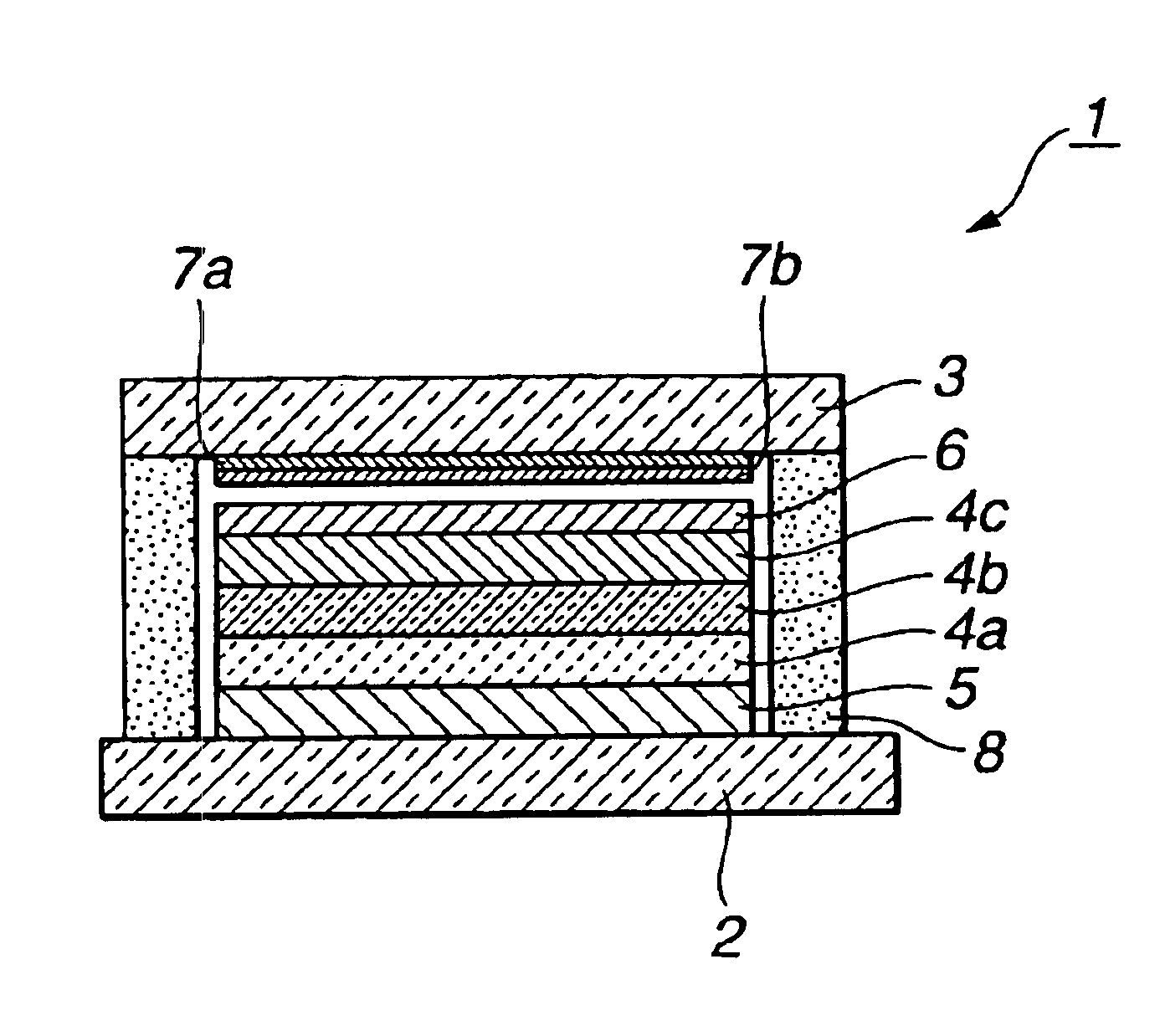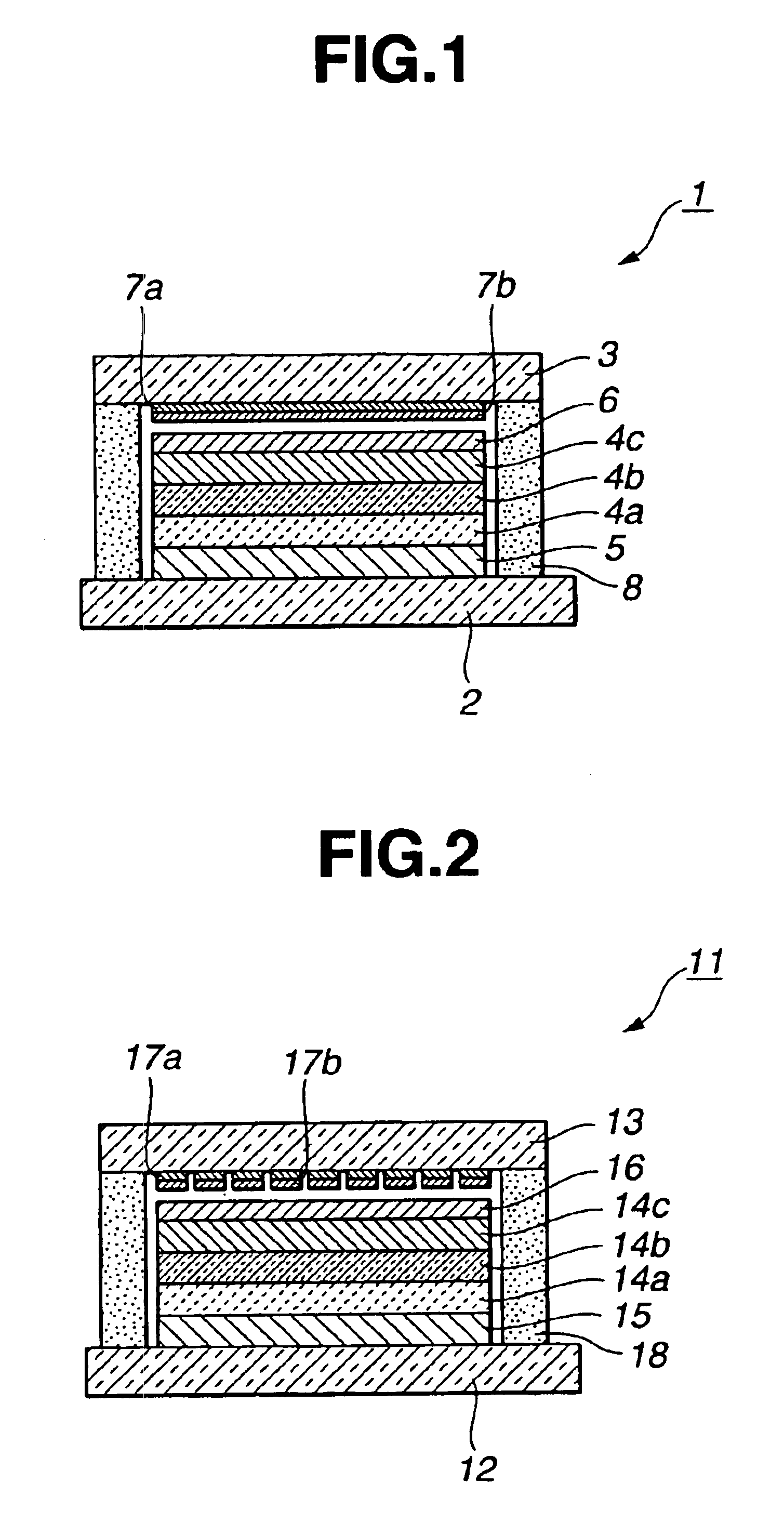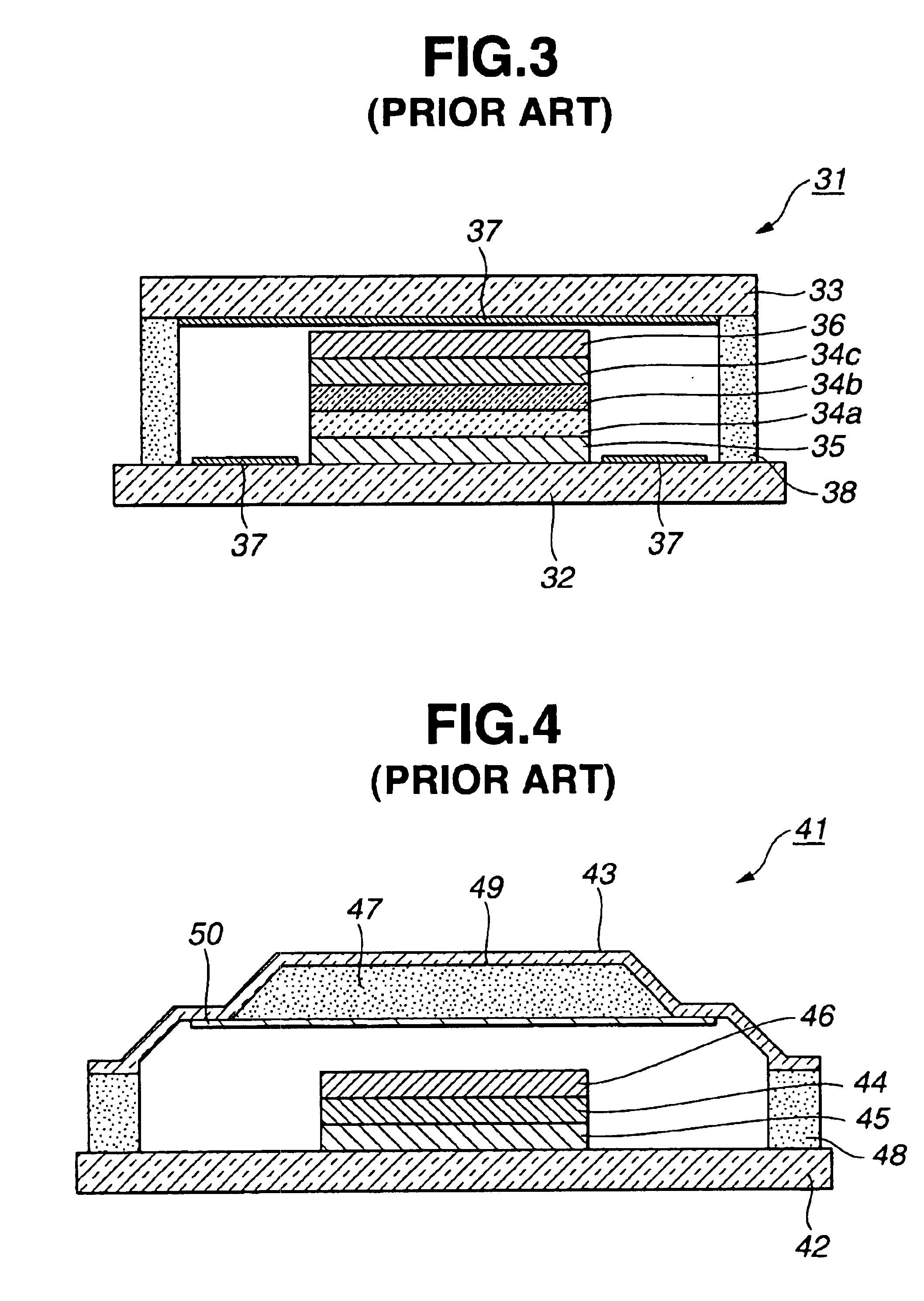Organic EL element
a technology of organic el and el elements, which is applied in the direction of discharge tube luminescnet screen, other chemical processes, separation processes, etc., can solve the problems of affecting the life of products, unable to prevent the genus and growth of dark spots in the el device, and unable to visually observe the non-light emitting portion
- Summary
- Abstract
- Description
- Claims
- Application Information
AI Technical Summary
Benefits of technology
Problems solved by technology
Method used
Image
Examples
example 1
[0079]As shown in FIG. 1, the organic EL device 1 is comprised of a sealed container which is formed by sealing hermetically the rectangular flat plate of glass substrate 2 with the glass-made sealing cap 3 placed opposite to the glass substrate 2 by means of adhesive 8 of sealing part. The 200 nm thick anode 5 by ITO film as a transparent conductive material were formed by a sputtering method on the whole surface of the glass substrate 2 which was a part of the sealing container. Patterning is performed in the shape of anode by a photolithography method to form the anode 5. A part of the anode 5 as an electrode was lead to the end of the glass substrate 2, which was connected as a lead electrode to a drive circuit (not shown).
[0080]An organic emitting layer was formed on the top surface of the anode 5. The organic emitting layer has a three-layer laminated structure comprising the hole injection layer 4a, the hole transportation layer 4b and the emitting-electron-transportation lay...
example 2
[0087]In Example 2, the water-capturing medium used in Example 1 was used in combination with calcium oxide (CaO) which is conventional inorganic water-capturing medium. Since the structure of the organic EL device 1 is the same as that of Example 1, Example 2 is described by referring to FIG. 1. Since the glass board 2 and the organic emitting part on the glass board 2 are the same as those of Example 2, descriptions will be omitted.
[0088]A flat glass plate for a sealing cap was cleaned and put into a vacuum evaporation apparatus. Then, 3 nm thick film of phthalocyanine blue-CuPc, organic pigment, was vacuum-evaporated on the inner side portion of the sealing cap as the water-capturing layer 7a by the use of an evaporation mask. Thereafter, a vacuum evaporation apparatus was filled with dried nitrogen to release vacuum, and the sealing cap was transferred to a glove box filled with dried nitrogen without being exposed to air. Then, a dispersion type-water-capturing medium was made ...
example 3
[0092]In Example 2, as shown in FIG. 2, the organic emitting layer for white light emission and the water-capturing medium holding layer formed in three colors pattern, that is, red R, green G and blue B were formed, and the sealing cap was functioned as R, G and B filter.
[0093]The sealing cap 13 was formed by vacuum-evaporating the water-capturing medium holding layer 17a having colors R, G and B on the same flat glass plate as that of Example 1, and patterning organic pigments of R, G and B in given shape by a mask-evaporation method, respectively. Examples of organic pigment of red R are alizarine red, quinacridone red, naphthol red, monoazo red, polyazo red, perylene red, anthraquinolyle red, diketopyrrolopyrrole red and the like. Examples of organic pigment of green G are phthalocyanine green, sap green and the like. Examples of organic pigment of blue B are phthalocyanine blue etc.
[0094]Thereafter, the vacuum evaporation apparatus was filled with dried nitrogen to release vacu...
PUM
| Property | Measurement | Unit |
|---|---|---|
| depth | aaaaa | aaaaa |
| humidity | aaaaa | aaaaa |
| temperature | aaaaa | aaaaa |
Abstract
Description
Claims
Application Information
 Login to View More
Login to View More - R&D
- Intellectual Property
- Life Sciences
- Materials
- Tech Scout
- Unparalleled Data Quality
- Higher Quality Content
- 60% Fewer Hallucinations
Browse by: Latest US Patents, China's latest patents, Technical Efficacy Thesaurus, Application Domain, Technology Topic, Popular Technical Reports.
© 2025 PatSnap. All rights reserved.Legal|Privacy policy|Modern Slavery Act Transparency Statement|Sitemap|About US| Contact US: help@patsnap.com



